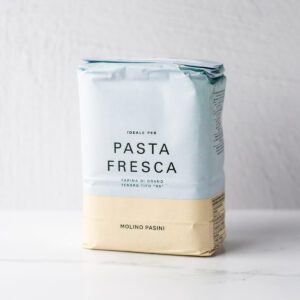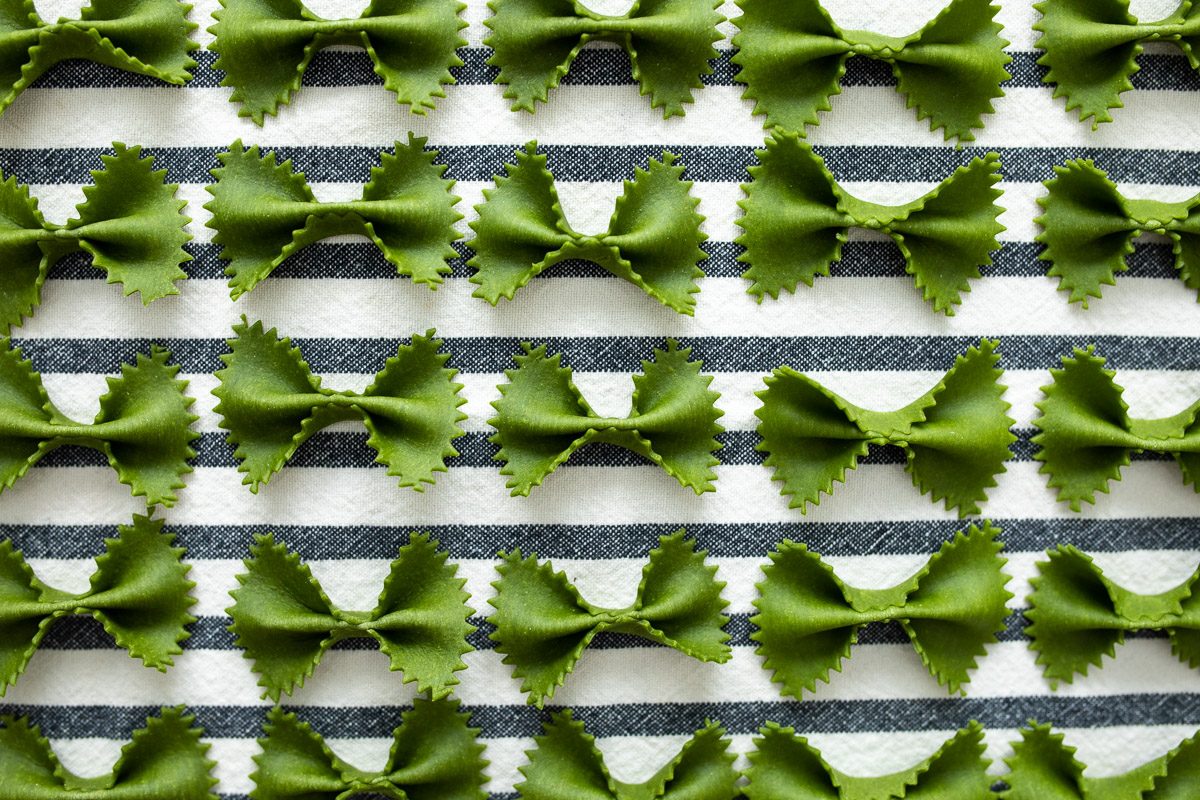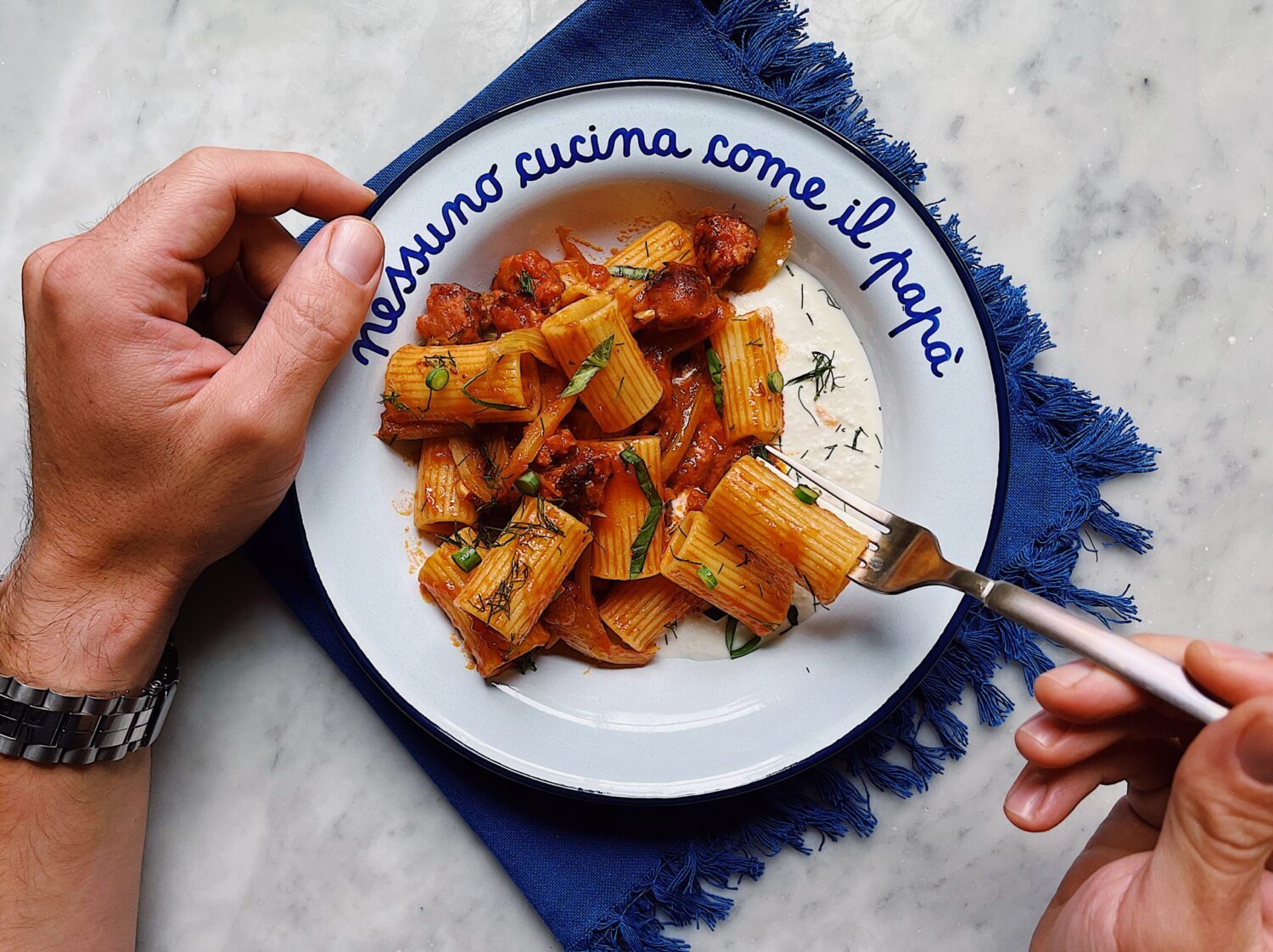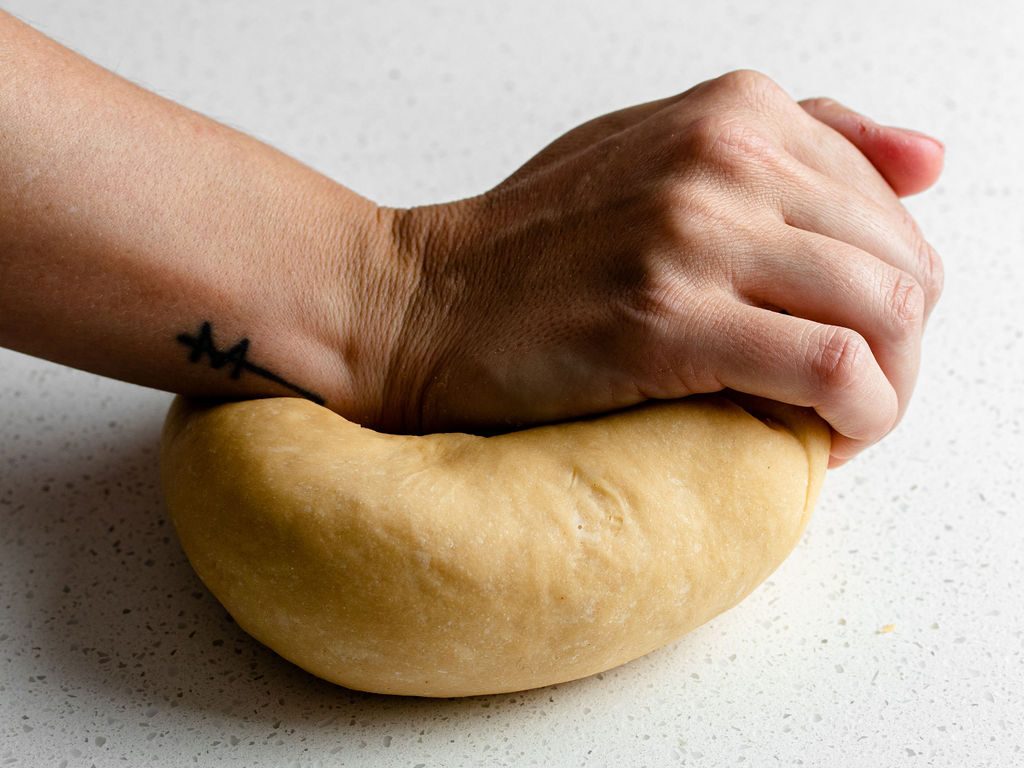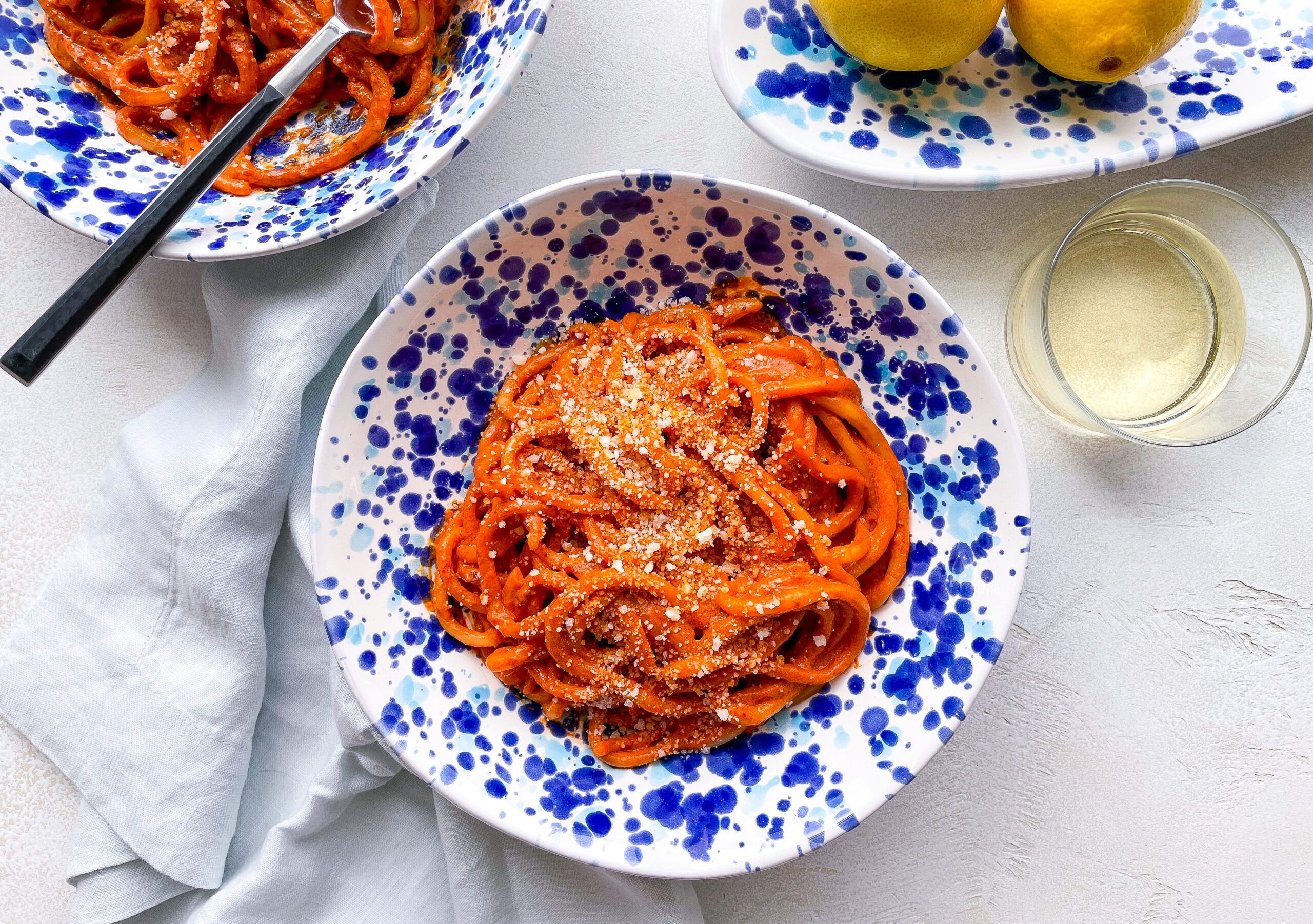
Pasta al Fumo: Spicy Tomato Pici
Recipe and photos by Meryl Feinstein
Pasta al fumo is a smoky-spicy dish from the Tuscan town of Cortona. It was created by Adriana Biagianti Accordi, a cook at the restaurant Tonino’s, after tasting something similar during a trip to the north of Italy—today, it’s a cult classic in the region and still a staple of Tonino’s menu.
Traditionally, the smokiness comes from bacon and the spice from fresh chili peppers; in this vegetarian version, I’ve swapped both for chipotles in adobo, smoked, dried, and rehydrated jalapenos canned in a sweet-tangy tomato sauce. In true Tuscan fashion, this sauce is especially satisfying with pici—thick, rustic spaghetti from Siena and one of my favorite fresh pastas to make (it’s perfect for beginners!)—though you can, of course, pair it with dried shapes like spaghetti and penne.
This recipe is also inspired by q.b. cucina’s beautiful new Adriatico Splatterware collection (pictured here). Each piece is imported from Cortona and hand-crafted by Italian artisan Giulio Lucarini.
Uncategorized
Adriatico Splatterware Gelato Bowl
Spicy Tomato Pici
Serves 4
Prep time: 3 Hours, plus resting
Cook time: 25 Minutes
Special Equipment
rolling pin (or wine bottle)
kitchen scale (optional, but helpful)
Ingredients
For the pasta:
400 grams (2½ cups) ‘00’ or all-purpose flour
185 ml (¾ cup) warm or tepid water
15 ml (1 tablespoon) extra-virgin olive oil, plus more for shaping
Semolina flour, for dusting
For the sauce:
45 ml (3 tablespoons) extra-virgin olive oil
2 garlic cloves, peeled and crushed
1 rosemary sprig
30 grams (2 tablespoons) chipotle chili paste or finely chopped chipotles in adobo, plus more if desired
60 ml (¼ cup) vodka
360 ml (1½ cups) tomato puree (passata)
Kosher salt
120 ml (½ cup) heavy cream
Finely grated Parmigiano-Reggiano, for serving (optional)
Method
To make the pici:
Make the pasta dough by hand (see instructions for the “well method” here) and knead it vigorously until smooth and firm, about 10 minutes. Alternatively, add the flour, water, and olive oil to a food processor fitted with a steel blade. Pulse in a few brief increments until the ingredients are evenly distributed and couscous-like beads of dough form (the mixture should come together easily when pressed). Transfer the dough to a work surface and knead for 5 to 10 minutes, until the dough is smooth and homogeneous.
Wrap the dough tightly in plastic wrap and allow it to rest at room temperature for 1 hour (a longer resting period will make the pici easier to roll).
Dust a baking tray with semolina flour or line it with a dry, tightly woven dishcloth and keep it nearby. Cut off a quarter of the dough and re-wrap the remainder immediately.
On a clean wooden board (if you have one), flatten the section of dough with the palm of your hand into a rough oval. Then, with a rolling pin—or wine bottle—roll the dough into a disc about ¼-inch (5 mm) thick, about the thickness of pita bread.
With a pastry brush or your fingers, coat the disc of dough in a thin layer of olive oil—get the front, back, and the edges. This will prevent the surface from drying out and cracking.
Cut the dough with a bench scraper or sharp knife into strips roughly ¼-inch (5 mm) wide. They will all be different lengths.
Position one of the strips horizontally on your work surface. Starting in the center, use your fingers to roll the strip of dough into a thin strand—first back and forth, until the surface is smooth, and then outward in opposite directions, eventually making your way towards the ends. The goal is a strand that’s 2 to 3 mm thick but do the best you can!
If cooking the pasta shortly after shaping, coil the strand into a loose spiral on the prepared sheet pan. If freezing the pasta, roll the strand in semolina before coiling.
Repeat the process with the remaining strips, and then the remaining dough, arranging the finished coils in a single layer (you might need two trays). If the pieces start to dry and crack on the surface as you roll, coat them with a touch more olive oil. If any of them break, don’t sweat it—now you have two!
Storage note: To store the pici for future use, freeze the coils uncovered on the sheet tray until solid, about 25 minutes, then carefully transfer them to a freezer bag and return to the freezer (they’ll last for up to 3 months). When ready to cook, boil the pasta in water straight from frozen—no need to thaw—and stir the strands for a few moments until they defrost and unfurl.
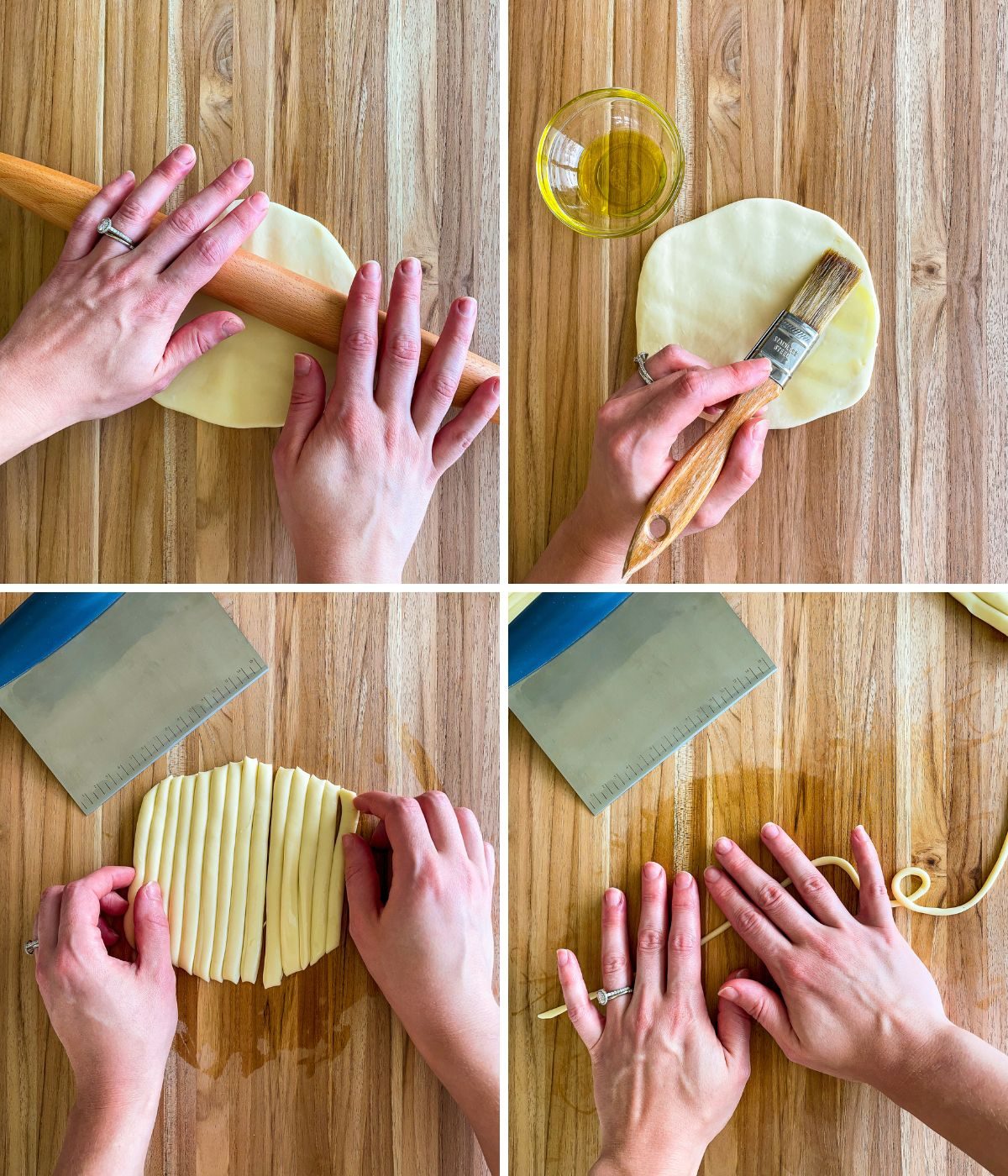
To make the sauce:
Bring a large pot of water to a boil.
In a large saute pan, warm the olive oil over medium heat. Add the garlic and rosemary and cook, turning occasionally, until the garlic is golden and fragrant, about 3 minutes. Discard the garlic and rosemary.
Add the chipotles and cook, stirring constantly, until fragrant and sizzling, 1 to 2 minutes.
Increase the heat to medium-high and pour in the vodka. Cook, scraping up any bits from the bottom of the pan, until the alcohol evaporates, 2 to 3 minutes.
Reduce the heat to medium-low. Add the tomato puree and a pinch of salt and simmer, using a whisk to stir occasionally, until thickened, 8 to 10 minutes. Whisk in the cream, bring to a bare bubble and turn off the heat. Adjust seasoning to taste.
When the sauce is almost ready, season the boiling water generously with kosher salt. Gently drop in the pici and cook, stirring occasionally, until tender but still with some bite, 3 to 5 minutes.
Using tongs and a spider sieve, carefully gather the pici and transfer them directly to the sauce (alternatively, drain the pasta in a colander and reserve 1 cup of pasta cooking water).
Toss the pasta and sauce together over medium heat until the pici are well-coated, about 2 minutes, using pasta water to loosen the sauce as needed. Divide the pasta among bowls, sprinkle with cheese, and enjoy!
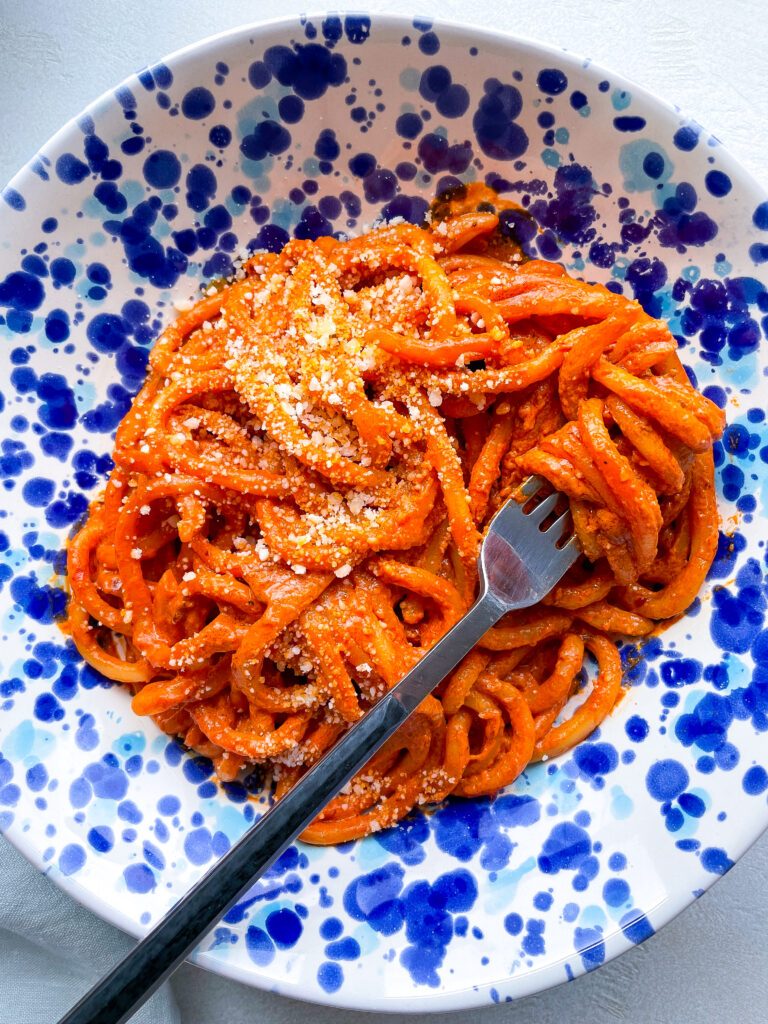
Uncategorized
Adriatico Splatterware Gelato Bowl

Meryl Feinstein is a chef, pasta maker, and food writer who left the corporate world for the food industry in 2018. After graduating from the Institute of Culinary Education, Meryl got her start at the renowned New York establishments Lilia and Misi, where she was part of the pasta production team. During her time in New York, she founded Pasta Social Club, a platform that brings people together over a shared love of food, learning, and making connections both on- and offline. Meryl now lives in Washington, D.C., where she develops recipes and teaches pasta-making workshops. She is the author of Pasta Every Day, a guide to making pasta doughs, shapes, fillings, and sauces with joy and confidence for all home cooks, which will be published in September 2023. Her dishes draw on her travels in Italy, ongoing research into the rich history of traditional pasta making, and her Jewish heritage.
Post a Comment
You must be logged in to post a comment.





